Do I Need an Attorney to File an SIBTF Claim?
When a worker is injured on the job in California, the employer’s insurance policy will pay that worker compensation for their injuries. If the worker is partially disabled, then the worker can get benefits (compensation) for that disability.
But what happens when an already disabled worker (or a worker with pre-existing injuries) gets injured and is now totally disabled? Does the most recent employer pay for the permanent disability for the rest of the worker’s lifetime? If so, why would an employer hire someone who has a previous disability coming into the job?
To help those who are already disabled, or have pre-existing conditions that add to their disability, the State of California set up the Subsequent Injuries Benefits Trust Fund (SIBTF), also called Second Injuries Fund, to help pay for the disability payments so a new employer doesn’t have to pay for the whole disability.
Who Is Eligible for SIBTF?
A typical example is a worker who is partially disabled with a 25 percent permanent partial disability rating to the body due to a back injury. This employee started a job with that condition and is injured on the new job, but without the previous injury, the worker would not be completely disabled, but now is.
The new employer would only be responsible for the percentage of disability caused by the new injury (even though the totality of the injuries suffered by the worker over his/her lifetime has caused permanent total disability). Without the fund, the employee, who is unable to work in any capacity, would only receive the limited compensation reflected by the latest injury with the new employer.
So, any employee with a pre-existing disabling condition who suffers a subsequent work injury that results in greater (see below) or total permanent disability may qualify for SIBTF.
SIBTF Requirements
- The new work-related injury must cause at least 35% permanent disability without any form of adjusting factors coming into play.
- The injured worker must have a pre-existing permanent impairment, medical condition, or disability.
- The disabilities (pre-existing and subsequent work injury) when combined must be equal to 70% or more of the total permanent disability.
- The total disability of both disabilities must be larger than it would be if the only injury to the employee was from the new job
How Does SIBTF Work?
To be eligible, the worker must have had a previous disability and then become injured on the new job. If both disabilities add up to over 70 percent of total disability, then the SIBTF will pay for the percentage of disability payments that are equal to the previous injury.
After the second injury, the worker has a deadline to make a claim for SIBTF payments. Usually, the SIBTF claim is made after the conclusion of the workers’ compensation claim, although this is not a requirement. A medical evaluation will then be arranged by our office. Based on the medical evaluation (report) and other pertinent medical records, a committee will decide if the worker qualifies for additional benefits through SIBTF and will issue an award.
In almost all cases when someone qualifies for SIBTF, the worker will get the best possible outcome by hiring an experienced lawyer.
How Are the Payments Made?
Payments are made primarily the same way as workers’ compensation payments. In a typical WC claim, the worker can be sent checks or a direct deposit from the insurance company for their permanent disability every two weeks. However, it is the practice of the industry to seek a final lump sum payment as a way of settling with the insurance company. The SBITF will do the same. They can payout for each week for the rest of the worker’s life (depending on the final disability rating), or they can payout in one lump sum and close the case.
What if I Already Received Payments for My Previous Disability?
That is ok. The fund is designed to address a recent injury, that when combined with the previous injury, would create a permanent disability of over 70 percent. Therefore, if you have already settled the previous injury, you can still be compensated for that portion of a new disability.
What if I’m Receiving Social Security Disability, Can I Still Get SIBTF Benefits?
The way the fund works is it gives credits for other disability payments received for the same injury, so if you are getting SSDI payments, or have a prior award for the old injury and are receiving permanent disability payments, these will be calculated as a credit to the SIBTF and will reduce the amount given to the employee. In most cases, it is still worth it to make a SIBTF claim as the credits rarely overcome the award amount.
Contact Pratt Law Corporation Today to See if You Are Eligible For SIBTF Benefits
In almost all cases when someone qualifies for SIBTF, the worker will get the best possible outcome by hiring an experienced lawyer. Pratt Law Corporation focuses on Workers’ Compensation Law and handles SIBTF claims as well.
Contact us today for a free, confidential consultation and case evaluation.



